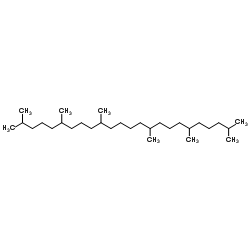A stochastic, local mode study of neon-liquid surface collision dynamics.
Daniel M Packwood, Leon F Phillips
Index: Phys. Chem. Chem. Phys. 13(2) , 762-78, (2011)
Full Text: HTML
Abstract
Equations of motion for a fast, light rare gas atom passing over a liquid surface are derived and used to infer the dynamics of neon collisions with squalane and perfluorinated polyether surfaces from experimental data. The equations incorporate the local mode model of a liquid surface via a stochastic process and explicitly account for impulsive collisional energy loss to the surface. The equations predict angular distributions for scattering of neon that are in good quantitative agreement with experimental data. Our key dynamical conclusions are that experimental angular distributions derive mainly from local mode surface topography rather than from structural features of individual surface molecules, and that the available data for these systems can be accounted for almost exclusively by single collisions between neon atoms and the liquid surface.
Related Compounds
| Structure | Name/CAS No. | Molecular Formula | Articles |
|---|---|---|---|
 |
Squalane
CAS:111-01-3 |
C30H62 |
|
Biological importance and applications of squalene and squal...
2012-01-01 [Adv. Food Nutr. Res. 65 , 223-33, (2012)] |
|
How membrane permeation is affected by donor delivery solven...
2012-11-28 [Phys. Chem. Chem. Phys. 14(44) , 15525-38, (2012)] |
|
Effects of squalene/squalane on dopamine levels, antioxidant...
2013-01-01 [J. Oleo Sci. 62(1) , 21-8, (2013)] |
|
Squalene emulsions for parenteral vaccine and drug delivery.
2009-01-01 [Molecules 14(9) , 3286-312, (2009)] |
|
Defensive effects of fullerene-C60 dissolved in squalane aga...
2010-02-01 [J. Biomed. Nanotechnol. 6(1) , 52-8, (2010)] |